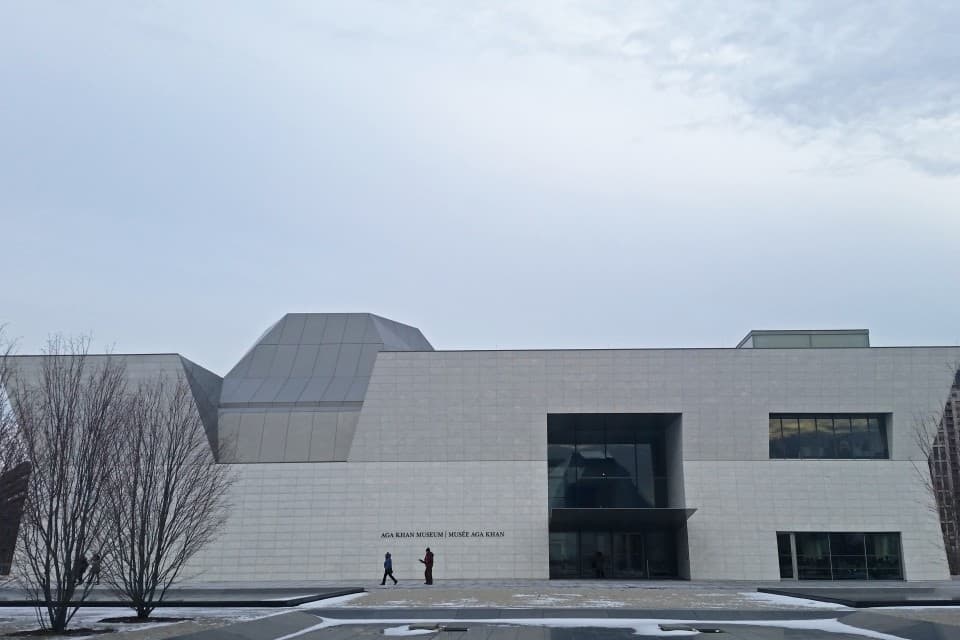“HomeGround: Contemporary Art from the Barjeel Foundation” is a testimony to the heterogeneous ways that themes of diaspora, immigration, violence, and belonging can be imagined. The exhibit, located at the Aga Khan Museum, mobilizes a wealth of mediums, ranging from film, to paint, to sculpture, by twelve artists of middle eastern descent. The artists, according to curator Suhelya Takesh, are “striving for an ability to remain in place, for the rights to travel, to emigrate, to return, or to feel at home.” Takesh wants guests to note the relationship between geography and self-fashioning.
Home Ground opens with Palestinian artist Larissa Sansour’s sci-fi Nation Estate (2012), which highlights the various entanglements of public and private life in an era of political conflict. The eight pieces in Sansour’s collection, consisting of one film and seven photos play with themes of violence, anxiety, suspicion, and modernity in the context of the Palestinian-Israeli dispute. There remains a resounding sentiment of hope, and her work materializes into a coherent future imagining of Palestine. For Sansour, it is a modern high-rise that represents Palestine and recognizes the region as a sovereign entity.
Moving from conflict to immigration, Youssef Nabil’s short film You Never Left (2010) is an evocative exploration into the process of transnational movement. Nabil interprets the departure from his homeland as a form of death. The protagonist is cleansed and wrapped in all white as per Islamic death ritual, and interprets his arrival in a new territory as a form of rebirth. You Never Left shows not only how immigration is characterized by loss, but also displays the opportunity for self-renewal. Juxtaposing Nabil’s experience is Raafat Ishak’s Responses to An Immigration Request from One Hundred and Ninety-Four Governments — a film humourizing the fraught process of immigration. Writing to 194 countries in pursuit of a new ‘home,’ Ishak enlists various government responses. Standing with other onlookers of his work was telling, as the laughter and comments of the crowd broke the tension of the piece’s heavy subject matter. Ishak proves that migration is not always marked by sadness and grief; that moments of humour are key to keeping that hope alive.
Lastly, Lebanese artist Charbel-Joseph H. Boutros’s Mixed Water, Lebanon, Israel (2013) and From Water to Water (2013); explore the nuances of alterity and sameness through the use of water. Mixed Water, Lebanon, Israel depicts two inkjet prints, one from Lebanon and another from Israel, separated by a small glass of water collected by Boutros from both regions. Because the River Jordan has been a significant point of contention for the two countries, Mixed Water pushes forward the ideas of peace and reconciliation in subtle ways. The glass of water abolishes any notion of difference, onlookers can’t tell which portion of water is from Israel and which portion is from Lebanon.
Despite the range of artists, mediums, and interpretations, the need to belong somewhere is a universal sentiment that the exhibit continually reiterates. Thus, the exhibit demonstrates the cathartic nature of art, and how it can be used as a tool for healing and reconciliation. Had the exhibit included more pieces, it would have made the journey to the Aga Khan museum much more satisfying. Nevertheless, Home Ground is a must see.
Home Ground: Contemporary Art from the Barjeel Foundation runs at the Aga Khan Museum until January 3, 2016.


